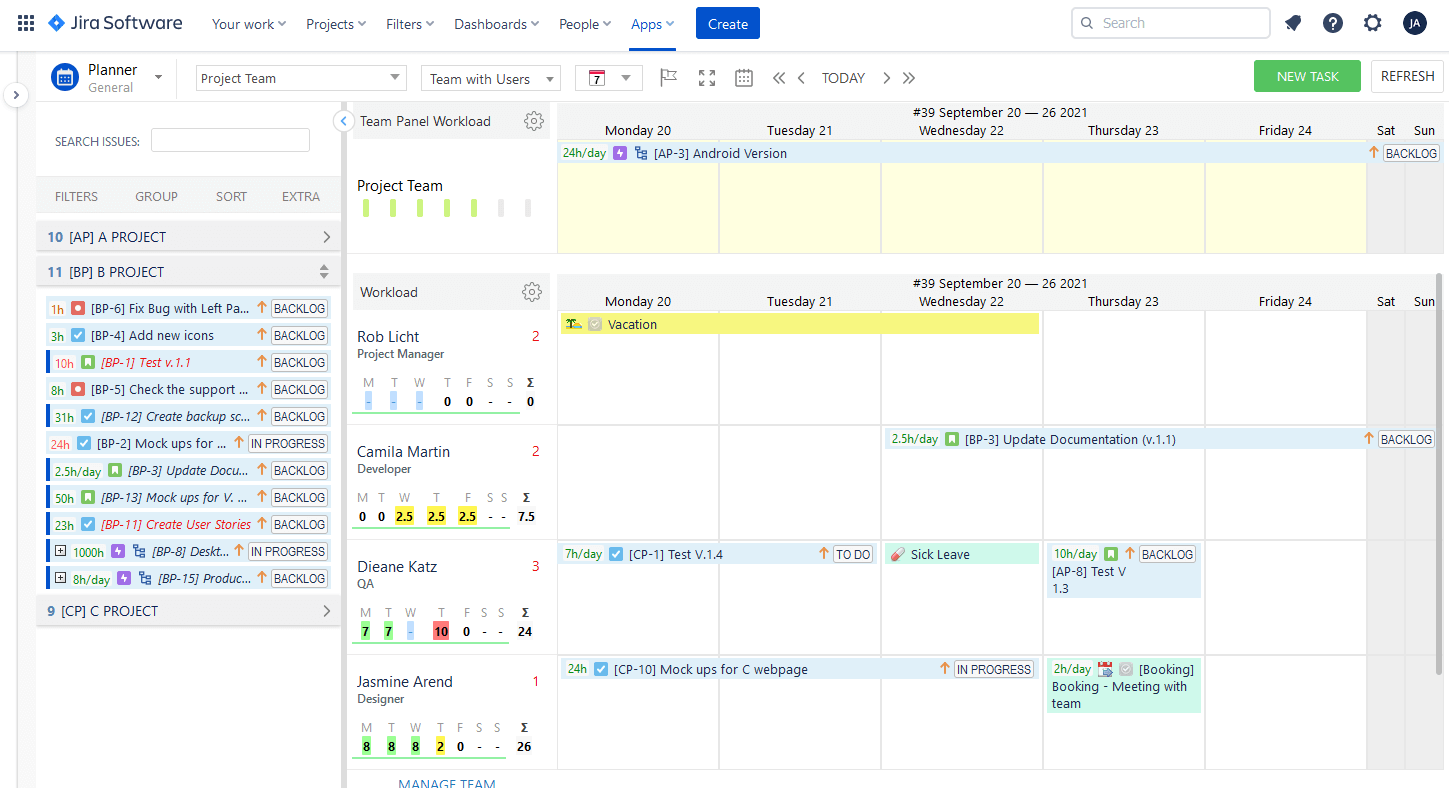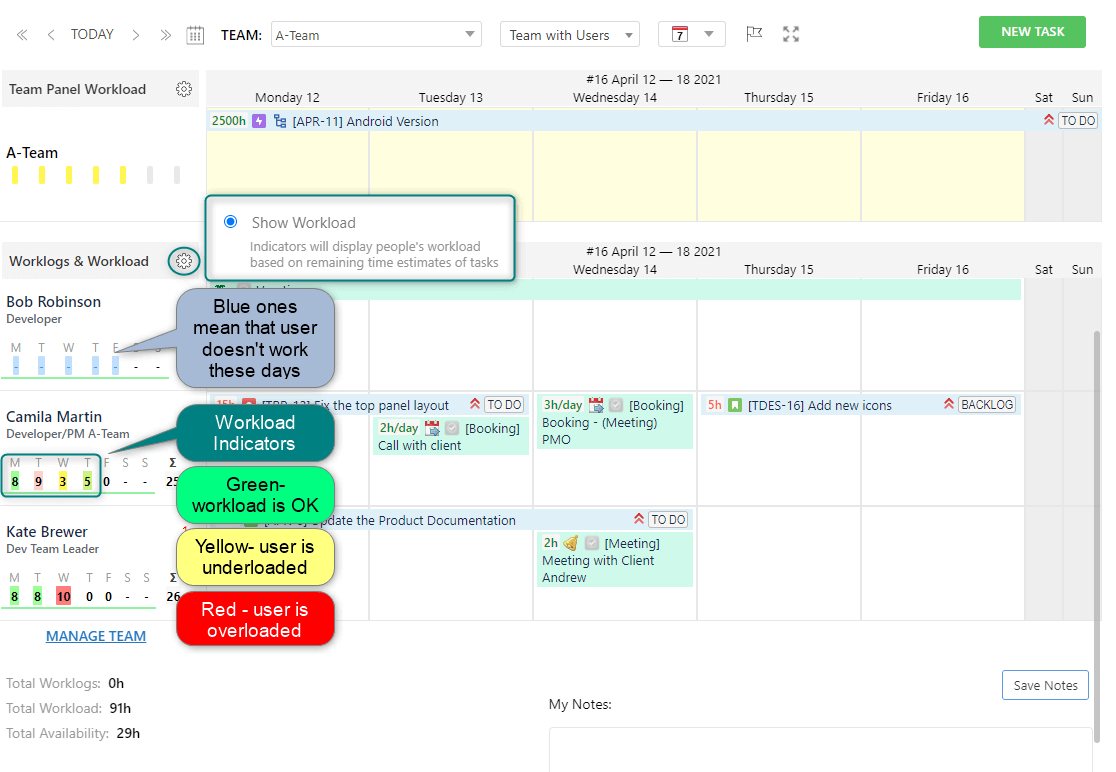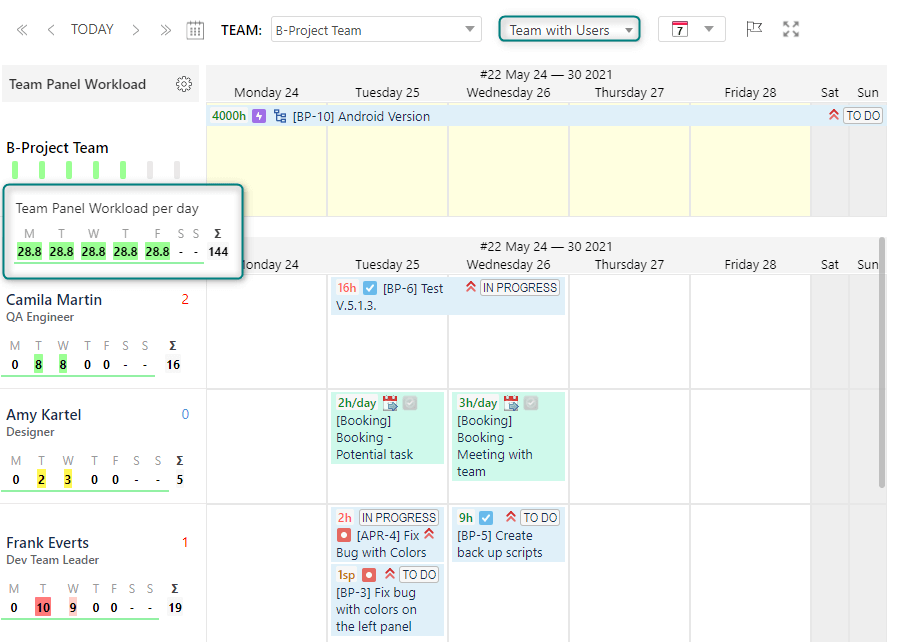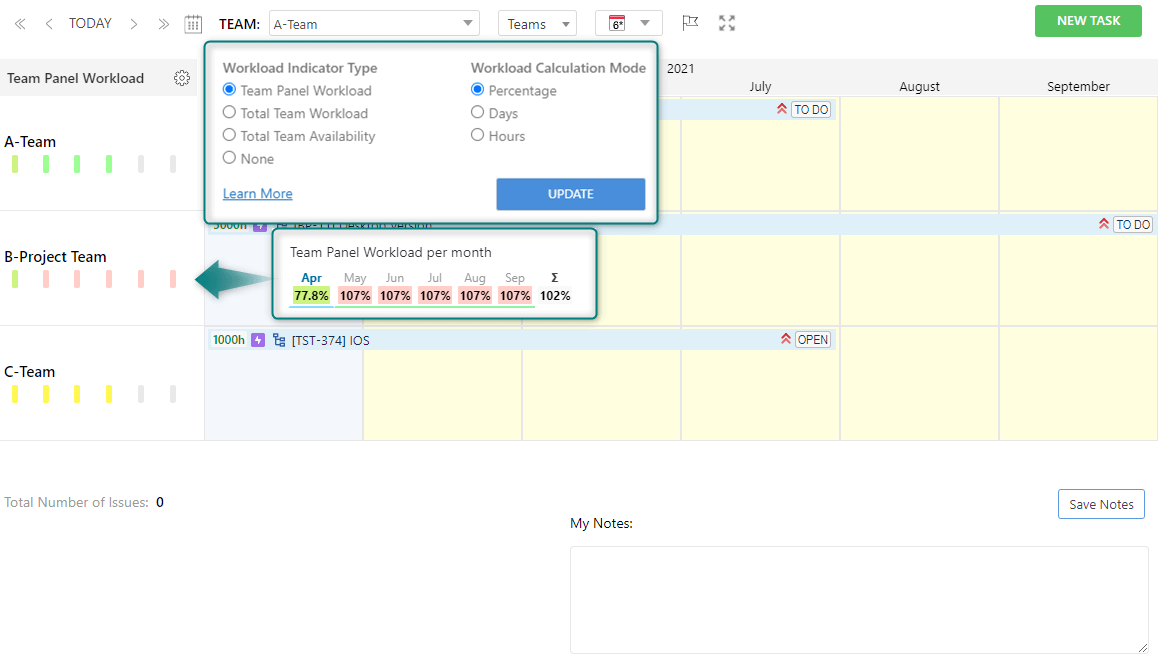The ability to effectively manage your team’s capacity is one of the important areas for project managers to focus on. Capacity planning is an important aspect of project management, especially under a fixed deadline. Jira is a powerful tool that helps you to effectively manage your team’s workload.
Jira capacity planning is one of the most commonly written topics in the
Jira community. With thousands of users running projects in the cloud, it’s crucial to understand how to plan, configure, and run your deployments effectively.
Business development is a difficult task for businesses, no matter what size they are. If you spend a lot of your time on management processes
without capacity planning tools, then things will go wrong. There are many things that you can do to streamline processes and increase productivity. Learning about Jira resource capacity planning is essential in this regard.
This blog post will cover some of the best practices for capacity planning in Jira,
as well as a step-by-step approach for how to effectively plan and monitor the capacity of your teams.
What is a Capacity Planning?
Capacity planning is the discipline of allocating resources for optimal performance. It focuses on anticipating future resource needs based on current and future business requirements. Capacity planning can be applied to both person-related resources, such as employees, and
non-human resources, such as different goods, equipment, properties, etc.
Capacity planning provides an organized approach to the orderly management of the flow of materials, information, and other resources through a facility or company. A company’s capacity planning provides the information needed to determine whether it has sufficient resources to implement its strategic plan and deliver on expected objectives.
The Advantages of Capacity Planning
The capacity planning process is a methodology used to ensure that the appropriate resources are available to ensure that projects can be completed effectively and efficiently. This process has many advantages for teams, project managers, companies, and employees.
Capacity planning in terms of the process can be defined as an extension of capacity management and production management processes that aims to ensure maximum customer satisfaction by ensuring optimal utilization of resources within the limits of the system and services' capabilities.
Capacity planning is a process that helps to plan the resources needed to meet capacity needs. It provides an outline of the resources required (for example, people, physical assets, and budgets) to enable organisations to achieve their objectives.
Among other benefits
Here are more benefits of capacity planning tools:
A clear vision of who is doing what and when it will be done
Transparent picture of the work process
Ability to prevent missing deadlines, resource over, or underload, and burnouts
Optimization of the planning process for the short, and long-time periods
Ability to make data-informed decisions
It becomes easier to plan budget costs and allocate resources.
The Challenges of Capacity Planning
We've all been there. Sitting around in a meeting trying to figure out why the team behind a project didn't accomplish its expectations. We want to hold them accountable for their mistakes and for where things went wrong.
The biggest challenge of capacity planning is always the same: we anticipate future growth/demand and then calculate numbers that are as accurate as possible without too much risk. But, as every business owner knows, accurate numbers are almost impossible to deliver.
Top 5 common capacity planning problems
Among common challenges we can single out the following ones:
Problems with Data collection and its quality. While collecting information you need to extract for yourself the most important indicators: individual or team level of capacity, roles, and position, skills. You should not also forget about the time frames
Accurate calculations, ability to calculate the need for resources and their current capacity
Capacity planning levels. Be accurate with the short and long time planning strategy
Communication within the organization. Project managers and teams should be always sure that they stay on the same page to achieve desired goals.
Ability to adapt quickly. The working environment is very unstable, even if you planned everything scrupulously, something can always go wrong.
Many organizations choose different project management and scheduling software to avoid these and other challenges, for example, companies frequently admire resource capacity planning in Jira.
Capacity Planning in Jira
Resource capacity planning in Jira is a never-ending job. Capacity planning Jira varies from one organization to another and every time, it's going to be different because of the different features taken into account for your required Jira configuration.
Jira capacity planning is crucial for project management as it ensures that projects receive the resources they require to achieve goals. Many agile teams use Jira advanced roadmaps capacity planning features during the product development process and for sprint planning, but Jira is also suitable for non-technical teams, as it fits the needs of teams of different types and sizes.

A successful manager is willing to engage their team and ask them what changes are needed for the next forecast or planning period. Jira capacity planning is a critical success factor for increasing team productivity and meeting project targets.
Project managers need a clear understanding of who is doing what and when, so capacity planning Jira activities should be organized accurately. There is no one size fits all approach to it, and Jira is no exception to that rule.
Jira can serve as a ticketing system for managing your tasks, or as a project management tool, but there are specific things you need to remember before embarking on the journey of Jira capacity planning.
Set up your projects and organize teams
Jira offers great project boards with all of the tasks. First of all, you need to create and prioritize your projects, as well as create tasks with and assign them to employees. Create teams and set up deadlines to make sure everything will be delivered on time and your capacity planning Jira activities run smoothly.
Make sure that PMs stay on the same page with their teams
A good PM always knows how much time will be needed for different tasks, depending on the task complexity and the PM’s previous experience. But what is more important, a good PM should take care not only of projects or tasks, but also care about their teams, prevent work burnout, and speak the same language with them, to avoid small misunderstandings and maintain effective cooperation. So, structured Jira capacity planning mechanisms always come in handy for PMs.
Get a clear visualization
Comprehensive visualization is a key factor in project success, as it helps to balance workload, get an accurate availability of your resources, and as a result meet deadlines. Jira has a lot of features for project management, but it doesn’t visualize resource utilization clearly. We’ve already mentioned Jira advanced roadmaps capacity planning that some teams use for
an in-depth visualization, as usually, it’s difficult to understand the capacity of teams&individuals, whether resources are over-, or underloaded.
Obviously, most users need a capacity planner to fill those gaps and enhance capacity planning in Jira, so Jira provides a great variety of capacity planning software.
ActivityTimeline is a resource capacity planning Jira app, one of the most popular add-ons in the resource planning area that facilitates Jira capacity planning.
Resource Capacity Planning with ActivityTimeline
Capacity evaluation and project management go hand in hand. Sometimes we need to observe the whole picture of resource workloads, and sometimes we need to take a closer look at individual resource availability. An advanced Jira resource capacity planning app will save your time and effort.
ActivityTimeline provides a lot of useful features which will help with Jira capacity planning. It’s a great example of a comprehensive Jira capacity planning plugin.You want to assign tasks and track your employees, but you don't want the headache of an inconvenient dashboard? You're in luck. With a scalable dashboard, you can automatically assign and track tasks. The app is fully synchronized with Jira, so Jira workflows are reflected on timelines and vice versa. Assign existing Jira tasks, or create new ones directly from the main dashboard. Create different events, assign specific skillsets, and assign positions to your users while tracking their work:

It's easy to get a comprehensive understanding of all workflows in one window when you have access to the
cross-project view for shared resources. ActivityTimeline, as a leading Jira capacity planning plugin, helps you stay on top of everything that's going on at different times. Its planning dashboard shows what tasks are related to a project and which team members are involved:
Workload/availability monitoring is quite easy with ActivityTimeline. Commonly people are bad at predicting how much capacity they have left, so the app provides a visualization of the teams & resource capacity with the help of the workload indicators:
Special workload indicators display people’s workload, so you can easily get an understanding of how much resources are utilized at a given point in time.
You can switch between various workload modes to understand the data from different perspectives:
Observe resource capacity at both individual and team levels with the help of a
team panel, as every team has a separate workload indicator:
All of the aforementioned modes help to understand Jira resource utilization from different sides. Teams' workload indicator also has different workload indicator types:
When you assign tasks to separate users or the whole teams, the workload indicators are updated automatically by the system:

Start Capacity Planning in Jira with ActivityTimeline
Capacity Reporting with ActivityTimeline
Resource capacity planning in Jira can’t be imagined without accurate reporting. App provides numerous reports for comfortable data tracking. The
Resource Workload Report is one of the most popular resource reports. It’s simple to use and helps to observe a clear picture of Jira resource utilization for different periods. Choose the needed values and generate a quick report which can be exported as an Excel file. Generate Resource Workload Report to observe the actual/future workload and to prevent people from work over-, or underload:
The default indicator does not show the details of each task. Our team developed a detailed Person per task workload report in order to help manage users' workloads on a day-to-day basis. It also helps with prioritizing long-lasting tasks:
Users can also use an Availability Report to see what resources have available working hours and assign new tasks to them:
Using ActivityTimeline plugin for Jira Capacity Planning
With the help of this capacity planning Jira plugin, its resource management, and tracking features, managers can see everything about resources and their availability. A scalable dashboard, advanced timesheets, customizable reports, and various planning levels will help to bring your Jira resource capacity planning to the next level.
With this data at their fingertips, they can create plans without worrying that resources will be overloaded with work. Enjoy effortless advanced resource management and have no more worries about Jira capacity planning activities.
In order to get acquainted with ActivityTimeline deeper
Schedule a Demo or
Start a Free Trial on the Atlassian Marketplace!


























